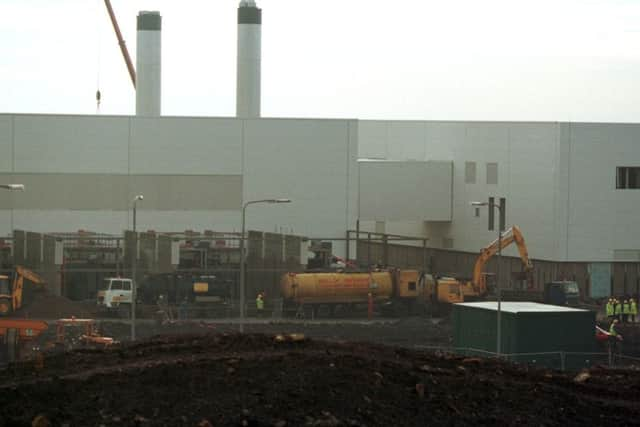Silicon Glen: Its decline and why Scotland no longer needs it


The rapid rise of so-called ‘Silicon Glen’ saw large-scale investment by multi- national companies, who ploughed money into building factories and research facilities along the M8 corridor, linking Scotland to the hi-tech oasis of California’s Silicon Valley.
By the mid 1990’s Silicon Glen reached its peak, fabrication plants mushroomed across the country, politicians waxed lyrical about Scotland’s future as the European centre of electronics and the country was responsible for manufacturing 35 per cent of Europe’s PCs, with the industry now employing around 55,000 people.
Advertisement
Hide AdAdvertisement
Hide AdBut as dramatically as it had risen, by the early 2000’s the dotcom bubble had burst and with Scotland’s heavy dependence on electronics manufacturing, came the rapid decline of Silicon Glen.


Despite the demise of Scotland’s electronics manufacturing industry, experts today say the country’s booming IT and software sectors have made up for the loss.
One in 25 Scots are now employed in the tech industry and there are more than 1,000 workplaces in the IT and telecoms sectors, worth an estimated £4 billion annually.
Even those who worked at the height of Scotland’s electronics boom, can see the positive side of how things turned out.
Colin Adams was the Scotland-based manager of California hi-tech company Cadence Design Systems in the 1990s and part of the Project Alba team, who were to bring a large research and design facility to Livingston.


“In the mid 90’s there was a general buzz that silicon was good and that Scotland was a good place to do something,” Mr Adams, who is now director of commercialisation at the University of Edinburgh, School of Informatics explains.
“We had a team in Edinburgh, manufacturing was still going on at the Scottish factories. One of the biggest issues we had was a sheer lack of design talent.
“We managed to convince Cadence that Scotland would be the best choice to build the new design facility so that went quite well.
Advertisement
Hide AdAdvertisement
Hide Ad“As with many industries in Scotland, we are only 5 million people, we are not going to be growing many multinational companies, but what we did have was talent, a good education system and a good quality of life to offer, and that’s what we built it on.”


Cadence boasted a revolutionary approach to designing “system on a chip” and a spin out company - TALITY - was due to be floated on the Wall Street stock exchange, but then came the dotcom bust.
“And then the bubble burst - for us, you couldn’t have had worse timing,” Mr Adams said.
“Everything went downhill, most manufacturing moved offshore, to Taiwan, Malaysia, and later mainland China.


“The rocketing cost of creating new silicon fabrication facilities, meant they were not being built locally, and the industry became more cost focused. The Motorola factory re-trenched.”
Mr Adams said though the industry had not been completely wiped out, the fall had been dramatic.
He said: “Locally there is still quite a strong niche with several design teams, focused on analogue design, but nothing like it was in the 90’s, the change has been quite dramatic. It is such an expensive area to be in, a fabrication plant will cost around £10 billion.
“It is no longer a big employer in Scotland, the last fabrication plant is due to close in Greenock. It is certainly not what we hoped it would become when we started off on this path.
Advertisement
Hide AdAdvertisement
Hide Ad“The good news is that what we have now is a much healthier industry within the digital tech sector, and one that we have, to a certain extent, we have control over ourselves.”
Polly Purvis, is chief executive of ScotlandIS, the trade body responsible for the country’s digital technologies industry. Like Mr Adams, she worked in Scotland at the time of the growth and decline of Silicon Glen.


“The decline was clearly a disappointing story, but there is another side to it, now we have a vibrant healthy software and IT industry, where there are actually more jobs,” she said.
Ms Purvis said Scotland became the centre of electronics production in Europe due to its highly skilled workforce and less onerous labour laws than some other European countries, like France or Germany.
“The reality is there has been a decline, and the decline has left behind thousands of people who lost their jobs,” she said.
“But realistically it’s how the world moves on and the big success story in Scotland has been in IT and Software, with a healthy growth of locally-based tech companies.
“Having a wealth of small to medium companies is actually preferable, when you have big tech companies and they suddenly move on, then you have the problems,” she added.